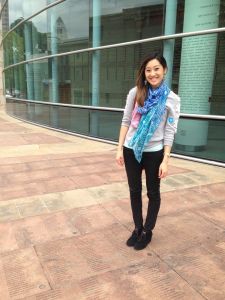Next week, Big Trouble in Little Tokyo welcomes director Justin Lin to the museum for a tenth-anniversary screening of The Fast and the Furious: Tokyo Drift, followed by a panel discussion. Below, JANM Vice President of Programs Koji Steven Sakai reflects on Lin’s influence.

When I was growing up in the 1980s and ’90s, there were zero Asian Americans on television, in movies, or in music. Okay, that’s not completely true, but it isn’t that far off. In fact, I remember playing G.I. Joe and turning one of the bad Asian ninjas (Storm Shadow) into one of the good guys.
Later, when I was thinking about becoming a screenwriter, I wasn’t sure it was possible since there wasn’t really anyone in the film and television world that I could point to and say, “That’s who I want to be like.” I didn’t believe it was actually a viable career, because if it was, why weren’t there more Asian Americans doing it?
It was around this time that three things happened in the world of Asian American pop culture. The Mountain Brothers, the first Asian American hip hop group signed to a major label, released their first album, Self: Volume 1, in 1999. They weren’t just a gimmick either; their album was an instant classic. Then, in 2001, Chinese American rapper MC Jin won seven freestyle battles in a row on BET’s Freestyle Friday. I tuned in at the end of every week to watch him, mesmerized by his skill. Finally, in 2002, Better Luck Tomorrow, the first feature film by Taiwanese American director Justin Lin, came out. It was one of the first Asian American movies bought by a major company.
 All three of these pivotal moments made me think I could make a career in the arts. But since I’m a screenwriter and producer, Justin’s accomplishment was especially meaningful to me. For once, there was someone I could emulate.
All three of these pivotal moments made me think I could make a career in the arts. But since I’m a screenwriter and producer, Justin’s accomplishment was especially meaningful to me. For once, there was someone I could emulate.
Justin has gone on to become one of the most successful Asian American filmmakers working today. And even with his success, he continues to support the Asian Pacific American community through his blog/YouTube channel YOMYOMF (You Offend Me You Offend My Family) and by always casting Asian Americans in major roles.
He has been an inspiration to me, and I would argue that he has also inspired an entire generation of Asian American filmmakers. For all of these reasons, I am honored to bring Justin Lin to JANM’s Tateuchi Democracy Forum, where he will participate in a panel discussion following a 10th-anniversary screening of The Fast and the Furious: Tokyo Drift, the first of four films he directed in the highly popular Fast and Furious franchise. This event, which is part of JANM’s Big Trouble in Little Tokyo series, will take place on Thursday, February 4, at 7 p.m.
Today, there are many more Asian Americans who are visible in popular culture. But I would argue that they all owe a gesture of thanks to pioneers like the Mountain Brothers, MC Jin, and Justin Lin, who helped make things a whole lot easier for those who came after them.
For more information about the screening or to buy tickets, click here.
Koji Steven Sakai is the Vice President of Programs at the Japanese American National Museum, where he has worked for over 12 years. In addition to his work at the museum, he has written five feature films that have been produced. Most recently, his debut novel, Romeo and Juliet vs. Zombies, was released by Luthando Coeur.





























